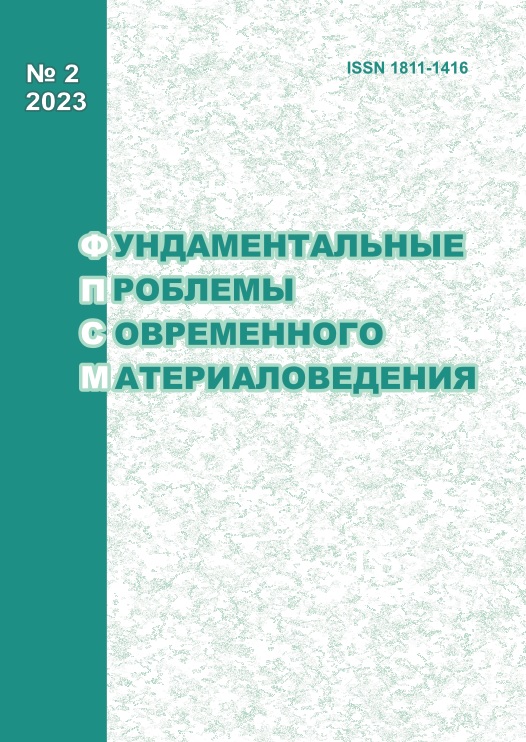STRUCTURE AND PROPERTIES OF AGING ALLOY AFTER ION IMPLANTATION
10.25712/ASTU.1811-1416.2023.02.005
Keywords:
ion implantation, structure, precipitation hardening alloy, heat treatment, mechanical and thermal treatment, corrosion properties, mechanical properties, aging, plastic deformationAbstract
It is known that ion implantation is a modern method of surface alloying of various materials and is widely used to improve the service properties of products operating in highly aggressive environments. Ion implantation can be used to process especially thin structures of elastic sensitive elements of thermotechnical control devices, for which the state of the surface layer is a determining factor affecting the metrological characteristics and service life of devices. When processing with a concentrated energy flow, thermal, radiation and shock-mechanical effects are simultaneously carried out. The processes of structural rearrangement developing in this case occur under conditions that are far from thermodynamic equilibrium and make it possible to obtain surface layers with a unique set of physical and mechanical properties. The article shows changes in the structure and properties of the 36NKhTYu precipitation hardening alloy implanted with Ti+, Ta+, N+ ions. It has been established that ion implantation leads to the formation of an implanted layer of the order of 0.2-0.3 μm. Implantation with nitrogen ions increases the cyclic resistance of the alloy. Ion implantation of Ti+, Ta+ makes it possible to sharply increase the corrosion resistance. The depth of penetration and distribution of ions in the alloy has been estimated. Implantation with nitrogen ions leads to a lower rate of accumulation of residual deformation, increases the cyclostrength, and the oscillatory nature of Δɛres ~ lnN is much less pronounced. In addition, a dose dependence of the degree of residual deformation accumulation was found.












 Journal «Fundamental’nye problemy sovremennogo materialovedenia / Basic Problems of Material Science»
Journal «Fundamental’nye problemy sovremennogo materialovedenia / Basic Problems of Material Science» This work is licensed under a
This work is licensed under a 
